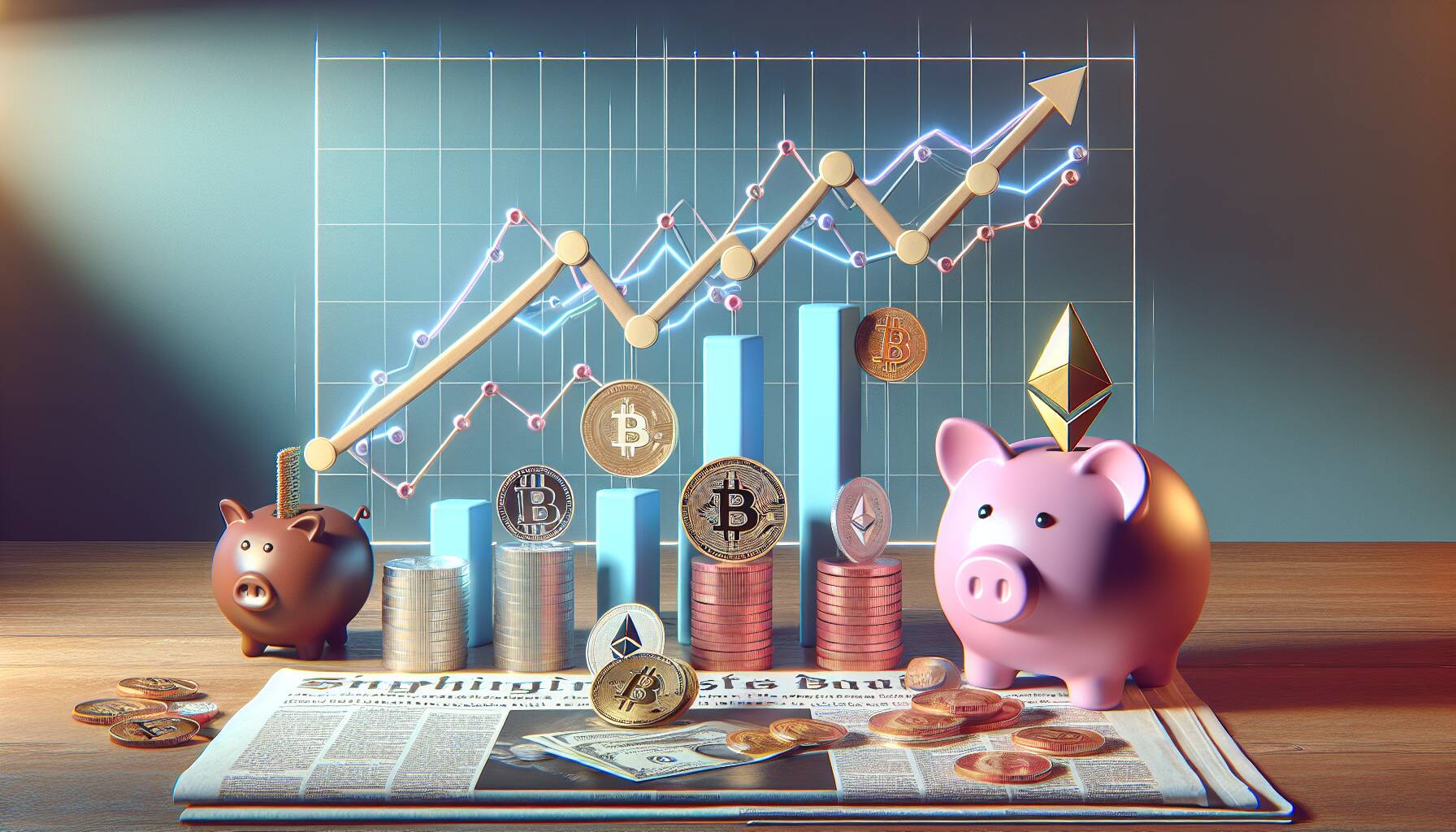The landscape of cryptocurrency in the United States is undergoing a significant transformation, with regulatory bodies signaling an eagerness to embrace digital assets. This shift is highlighted not just by the new administration’s acceptance of cryptocurrencies but also by the burgeoning interest in incorporating innovative memecoins, like Solana’s, into a new wave of cryptocurrency exchange-traded funds (ETFs).
In a remarkable turn of events, what once felt like an overwhelming array of obstacles for the crypto market has morphed into a realm of unprecedented creativity and absurdity. Investors are now contemplating whether coins such as $TRUMP, $BONK, and $PENGU could hold their ground as legitimate assets for ETFs. While opinions can vary widely—some view these tokens as mere frivolities, others see them as a form of cultural expression—a growing segment of investors finds them intriguing.
“The reality is that these new currencies could be valid assets for an ETF.”
Among the major players in this evolving narrative is Solana, which has surged to become the third-largest asset by market capitalization and leads in network activity. Its innovative Proof of History technology sets the stage for a multitude of blockchain applications, suggesting that a Solana ETF could be on the horizon. As Bitcoin has positioned itself as a store of value, Solana is carving out a niche in smart contracts, highlighting the need for investors to gain access to this emerging market through traditional financial avenues.
The path toward launching a Solana ETF is not without precedent. After a lengthy ten-year wait, Bitcoin and Ethereum ETFs made their debuts, albeit with caveats regarding staking rewards. Unlike their European counterparts, U.S. investors lack access to staking through ETFs, placing them at a distinct disadvantage. This calls into question why the rapidly advancing Solana blockchain has yet to receive similar recognition.
“Not giving investors access to invest in this technology…is like if we limited investors to invest in Amazon or Google during their initial offerings.”
With key applications for a Solana ETF already in review, the gravity of the situation cannot be understated. As the crypto market continues to expand, the approval of a Solana ETF could serve as a landmark moment, not just for retail investors but for institutional ones as well. Moving forward, the SEC’s response to these applications could shape the future of crypto-asset products in the United States, potentially creating a framework that aligns more closely with what investors see overseas.

The Current Regulatory Landscape for Digital Assets in the U.S.
The recent changes in the U.S. cryptocurrency regulatory environment are poised to significantly impact both retail and institutional investors. Here are the key points to consider:
- Emergence of Memecoins:
- The incoming president released a Solana memecoin, highlighting the growing interest in these assets.
- Memecoins like $TRUMP and others are being considered as potential assets for new cryptocurrency ETFs.
- Solana’s Market Position:
- Solana has rapidly become the third largest cryptocurrency by market cap and leads in network usage.
- It serves as a significant platform for blockchain-based applications with its innovative Proof of History technology.
- Regulatory Challenges:
- It took ten years for a Bitcoin ETF to be approved, and an Ethereum ETF faced similar hurdles, affecting investors’ potential returns.
- Investors in Ethereum ETFs are missing out on staking rewards, which could disadvantage American investors compared to their European counterparts.
- The Need for a Solana ETF:
- The absence of a Solana ETF limits investors’ ability to access a highly scalable blockchain technology.
- Approval of a Solana ETF could democratize access to a rapidly growing sector of the digital asset market.
- Potential for Future Framework:
- The new administration may pave the way for a more favorable regulatory framework for crypto assets.
- This could encourage broader acceptance and investment in cryptocurrencies and their underlying technologies.
“Not giving investors access to invest in this technology through their traditional financial accounts is like limiting investors from investing in Amazon or Google during their initial offerings.”
The Coming Crypto ETF Wave: Navigating the Solana Trend
The regulatory landscape for digital assets in the United States is shifting remarkably fast, particularly with the buzz surrounding new cryptocurrency ETFs that may incorporate not just mainstream options like Bitcoin and Ethereum but also memecoins like Solana’s $TRUMP coin. This intriguing development is stirring debate within the financial advisory space—some experts celebrate the creativity of such assets while others remain skeptical about their substantive value.
In comparison, the European market has placed itself ahead by seamlessly integrating staking rewards with various crypto exchange-traded products (ETPs), allowing investors to enjoy passive income while holding their assets. This creates a notable competitive edge for European investors who are poised to obtain not just exposure to cryptocurrencies but also benefits that U.S. investors currently cannot access through similar instruments. Such a disparity creates a sense of urgency for U.S. regulators, especially as the approval of staking ETPs in Europe sets the expectation for American counterparts to follow suit.
However, the introduction of a Solana ETF could serve as a game-changer in attracting both retail and institutional investors to a growing ecosystem. Solana’s unique selling proposition lies in its impressive scalability and capability for handling substantial transaction volumes. These advantages could entice investors looking for next-generation assets that promise functionality in real-world applications. On the flip side, the emphasis on memecoins may trivialize the serious investor interest in meaningful blockchain projects—leading some to question the maturity and legitimacy of such a market as it expands.
Monitoring the response from financial advisors will be crucial. As they navigate this new terrain, they may see both opportunities and pitfalls as more speculative assets become part of investor portfolios. For retail investors, the lack of staking rewards in U.S. Solana ETFs could mean missing out on potential gains similar to what have enjoyed in Europe. In contrast, institutional players may find their strategies evolving to account for the innovative forms of investment emerging from this regulatory shift.
In summary, while exciting advancements are on the horizon, they may lead to misalignments in investor expectations, especially if the focus doesn’t shift to more beneficial frameworks that foster actual asset growth. Whether this will create more problems or advance the digital asset market remains to be seen, but one thing is for sure—U.S. investors are watching keenly as the landscape begins to take shape.





